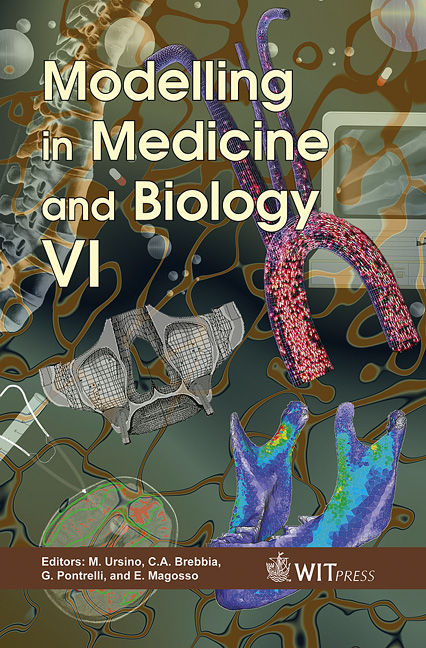Osmolality Control By Inhalation Or Micro-infusions?
Price
Free (open access)
Transaction
Volume
8
Pages
12
Published
2005
Size
332 kb
Paper DOI
10.2495/BIO050541
Copyright
WIT Press
Author(s)
G. Ciofani, A. Landi, D. Mazzei & A. Mazzoldi
Abstract
A model of osmolarity is proposed in this paper. This model represents a typical example of embedded physiological feedback control in physiology. Extensive simulation tests with a compartmental approach (using the specific software SAAM II) have been performed, showing that the model agrees with the findings published in the literature of endocrine physiology and with medical practice. As a relevant example of application of the models, the diabetes insipidus pathology was considered. In the case of central insipidus diabetes, it is possible to predict effects of a therapy, giving out synthetic ADH (where ADH is the antidiuretic hormone, the vasopressine) for restoring homeostatic conditions. Two kinds of therapy were considered: supply by inhalation or by microinfusion. In the first case, we evaluated the effect of inhalation using a two compartmental model to describe the effect of commercial drug (minirin, that means desmopressine acetate), and compared results with data existing in the literature. In the second case, the aim was to have a helping tool in the study and development of micro-infusors with sensors and controllers embedded so as to be able to release a controlled drug quantity, accorded to the patient and optimized for avoiding hyper- or ipo-concentrations of plasma ADH hormone. In this case, we used a mono-compartmental model, considering that the drug is infused directly in the plasma; results are again compared with data existing in the literature and with experimental data. Keywords: compartmental model, osmolality, ADH, total body fluid volume, central and nephrogenic diabetes insipidus, synthetic ADH, minirin, desmopressine acetate, inhalation, infusors.
Keywords
compartmental model, osmolality, ADH, total body fluid volume,central and nephrogenic diabetes insipidus, synthetic ADH, minirin,desmopressine acetate, inhalation, infusors.





